Research shows 86% of customers are willing to pay more for a great customer experience. Providing an excellent customer experience means meeting and surpassing customers’ expectations of your business. And to offer a top customer experience you need to communicate with customers in their channel of choice.
In today’s ultra-competitive local business landscape, customers have a choice of who they do business with.
Customers expect quick responses, easy transitions between communication platforms, and the choice of how they communicate.
So how do you provide a top customer experience and make life easy for your customers? Offer them a choice of communication channels.
Why are communication channel options important to businesses?
When customers get in touch with your business it’s likely because they need to. Most customers don’t get in touch with businesses because they want to. It’s usually because they’re experiencing some kind of issue, have a question, or need assistance.
To keep customers happy, you need to ensure you’re offering enough support and solving problems quickly.
Strong communication with a customer from the outset impacts the customer experience. If customers find it easy to communicate with your business they’ll have a better experience and be more likely to return to your business.
And as we’ve said before retaining existing customers is always more cost-effective than attracting new ones –– it costs 5 times as much to attract a new customer than to keep a new one.
The key is to make life easy for customers and give them multiple communication channels to choose from. Customers need to feel they can easily communicate with your business whenever they need to.
Keep in mind that each customer has unique communication needs and preferences so it’s important to give them options. Ensure your communication channels are accessible to all customer types.
Aim for omnichannel communication –– where you cover all communication bases. This means personalized customer-focused communication and broader messaging that reaches a larger group of customers.
You’ll also find that each communication channel has a different set of benefits and works best in certain situations.
4 different communication channels for communicating with customers
Offer your customers as many different communication channels as you can manage effectively. That way, your customers will be able to contact you in the way that suits them best.
Using multiple communication channels also helps you see how customers interact with your business. It’ll also help lower the pressure on different team members responsible for each channel.
To help you decide which customer channels are best for your business, here are 4 different options along with their benefits, downsides, and best customer segments.
1. Social media
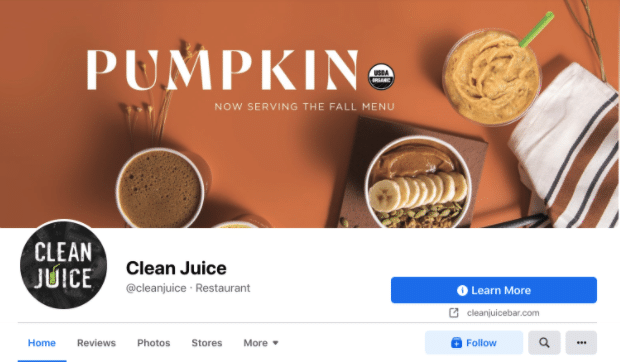
As well as a Facebook Page, a lawyer might also want to use LinkedIn to communicate with clients. But personal trainers or real estate agents might find Instagram or Facebook Pages best for communicating with customers.
Social media pages have the additional benefit of being marketing tools –– you can use them to attract new customers as well as engage with current ones. You can also use your social media profiles to broadcast messages to larger customer bases about things like your store opening hours or new product offerings.
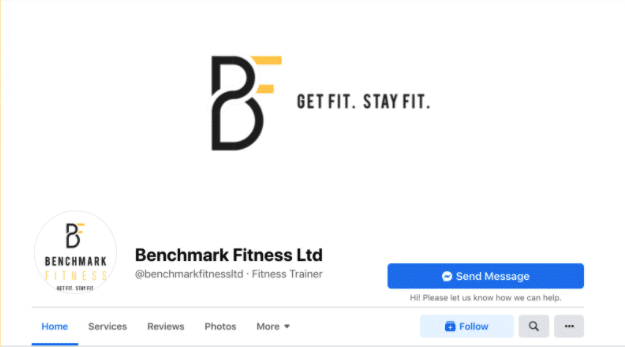
The downside of social media pages is that it can be hard to keep track of all the DMs, comments, and tags, so you might end up forgetting to reply to customers on time.
2. Face to Face
Brick and mortar businesses need to provide top-quality in-person customer service. Speaking to your customers in person is the best way to give them personalized support.
If customers feel comfortable in your business’s environment, you’ll help build feelings of trust and loyalty. When customers feel they can trust your business, they’ll be more likely to continue buying your products and services.
As well as in-person support, you can offer face-to-face help over video calls. This is great for customers who may live further away from your brick-and-mortar stores or offices.
Face-to-face customer support allows you to treat customers as individuals and give them an ultra-tailored experience. But the limitation is that customers short on time may find face-to-face customer support inconvenient.
Although best for building strong customer relationships, face-to-face communication isn’t the most efficient communication channel for team members. Since it’s more time-consuming and requires a team member’s physical presence, it’s harder to resolve multiple customer issues or questions at the same time.
3. Phone
Phone-based communication is one of the more traditional choices of communication channels. Customers generally like the convenience and familiarity of phone customer service.
While it’s not as personalized as face-to-face communication, using the phone as a communication channel still allows you to tailor your communication to each customer. Engage with your customers’ individual needs and ensure you take the time to fully understand their unique requirements.
To personalize your phone-based customer interactions, follow these tips:
- Use your customer’s name
- Be authentic and ask how your customers are or how their day is going
- Listen and fully engage with the issue or question at hand
- Ask questions based on what the customer is telling you and avoid reading from a script
- Offer solutions that are tailor-made to the issue
You’ll find that older generations (55+) are most comfortable using phone communication channels and are likely to prefer speaking over the phone as opposed to using a live chat or social media.
The main limitation is that customers may have to wait in a queue before speaking to a team member. This can be frustrating for time-pressed customers who need a quick solution.
4. Email
Email is a top marketing tool and communication channel you can use to engage with customers.
It’s a good option for when you need to broadcast business information across multiple customer segments. It’s one of the best communication channels for when an instant reply isn’t necessary. When your customers require a quick response, email might not be the best communication channel.
Many businesses use email addresses as customer identifiers, especially when they’re using CRM software. Even if you don’t plan on using email as a primary communication channel, it’s still worth collecting customer email addresses for marketing and identification purposes.
3 ways of using GatherUp to better communicate with customers
Effective customer communication also means using the right tools to help you better understand customers and their needs. When you understand customer needs, you’ll find it easier to fine-tune your communication and satisfy more customers.
1. Customer Activity Dashboard
Knowing how your customers feel about your business’s customer experience and communication channels will help you give customers more of what they want and help improve your offering.
The Customer Activity Dashboard pulls together all your 1st and 3rd party reviews in one screen to give you real-time insight into your customers’ opinions. By viewing all of this customer feedback data in one place you can glance at which communication channels customers prefer.
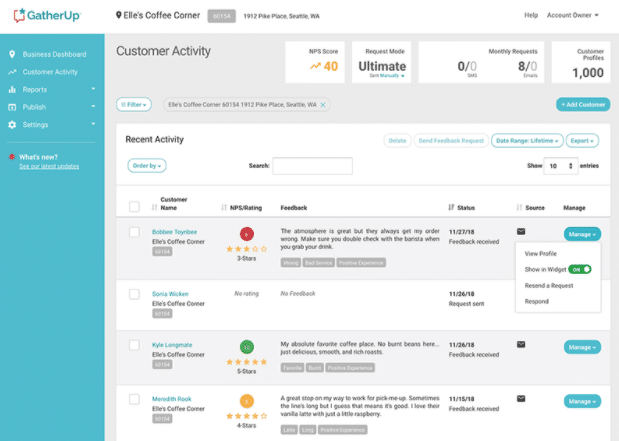
You may see that customers repeatedly mention positive or negative elements of your business’s communication in their reviews and feedback. For example, you might see customers consistently praise your in-store team members but get frustrated by your slow email response times.
Alternatively, you might find that instead of phoning, customers would like to have the option of making dinner reservations through social media channels.
You can also view results from any NPS surveys you run. For example, you may choose to run an NPS survey to determine whether customers are satisfied with solving problems in-store or on the phone.
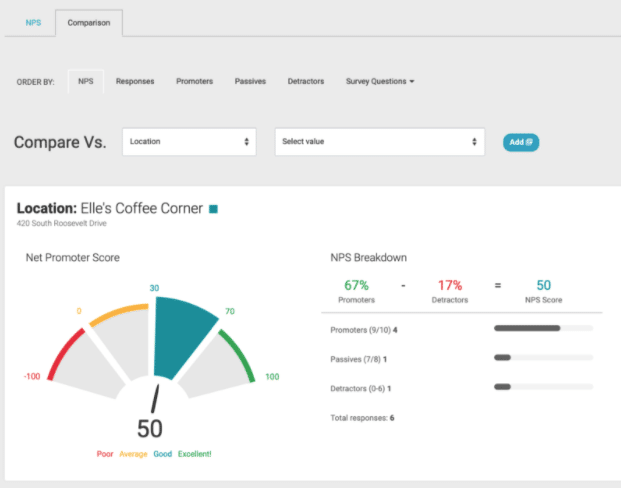
Once you have the results from the NPS survey, you can quickly check on your customer activity dashboard the percentage of detractors and promoters. You could then follow up with the detractors with personalized emails to find out which elements of the communication channel they are unhappy with and how they would like to see improvements.
2. Inbox for better managing customer feedback
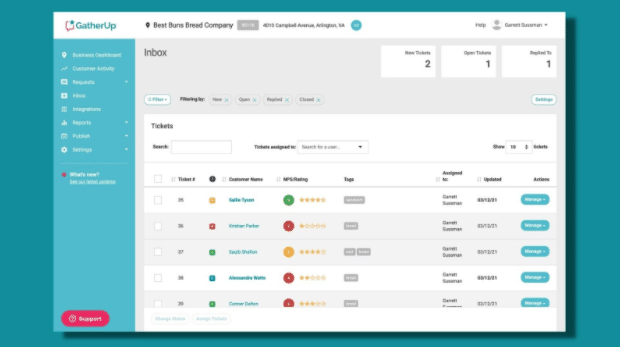
Taking customer feedback seriously and being prepared to make proactive changes across your business is key for keeping customer satisfaction levels high. Every piece of feedback you receive from a customer –– positive or negative –– represents a key opportunity for improvement.
By using the GatherUp feature, Inbox, you can help your employees better communicate and connect with customers. Instead of sporadically remembering to reply to reviews and implement feedback, Inbox takes customer feedback and immediately routes it to relevant employees.
Instead of having to manually relay reviews back to the support team to reply to, you can use ticketing and automated smart routing to prioritize and send customer feedback to the right team members.
You can also create templates to help your employees reply to customers in different scenarios. That way you can help team members reply on a consistent basis in your brand’s voice.
By streamlining your feedback replies and making it easier for team members to reply efficiently and consistently, you’ll improve how customers feel about leaving feedback with your business.
3. Build a customer satisfaction survey
Regularly surveying your customers is vital for understanding how they feel about your business’s chosen communication channels. You can ask customers to tell you how they feel about how easy it is to contact your business with problems or questions as well as how easy it is to solve them.
Read more: How to create an effective customer satisfaction survey
Make it a priority to survey different customer segments quarterly, semi-annually, or annually. For example, you could survey all customers in an extensive annual customer satisfaction survey. You could also survey new customers a month after doing business with you.
Making time for regular surveys will help you understand how customers feel about their regular interactions with your brand and employees. Once you’ve collected customer feedback, the key is to create an actionable plan to improve customer interactions.
Using GatherUp, you can build visually pleasing and on-brand CSAT surveys that help you dive into customer sentiment. We recommend using a mix of open and closed questions and keeping to a survey length of around 5 questions to improve completion rates.

Final thoughts: Communicate with customers in their channel of choice
Communicating with customers through their chosen communication channel is key for improving your business’s customer experience and building a solid base of satisfied customers.
Take time to understand your customers’ needs and preferences when it comes to communicating with your business. Try a few different channels and see what sticks with certain customer segments and team members.
Monitor your customers’ responses to your channels and make sure to take their feedback on board to make improvements to how you communicate.
Ready to start communicating to your customers in their language? Enjoy a free 14-day trial of GatherUp and see how you can improve your customer communication.
Related reading:
